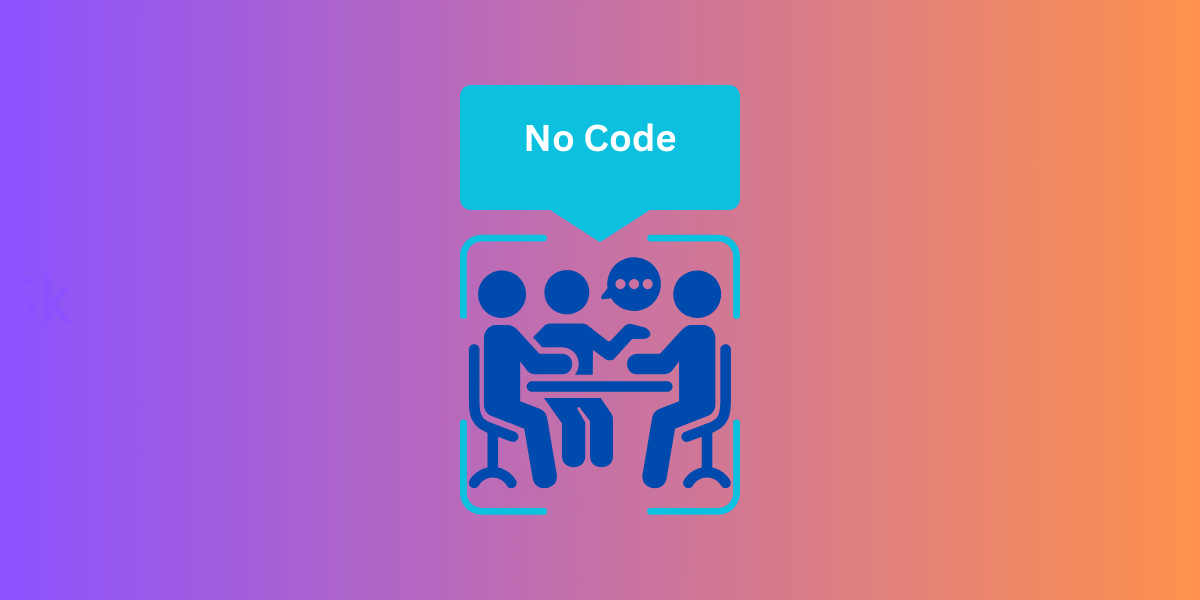Benefits of Low Code: Why 2024 is the Year of No Code Apps
Is traditional software development holding your business back? Are you looking for a way to quickly develop applications without breaking the bank?
Enter the world of low code and no code development – a game-changing approach transforming the app development landscape.
In this blog post, we’ll explore the rise of low-code and no-code platforms, their advantages, real-world applications, and limitations. By the end, you’ll understand “why no code isn’t always bad: discovering the benefits of low code and no code in app development.”
Stay with us as we dive into popular platforms, discuss the benefits of faster development and cost reduction, and address the concerns that may arise while using these innovative technologies. Empower your team, streamline your processes, and stay ahead of the competition with low code and no code development.
Key Takeaways
Low code and no code platforms revolutionize app development, offering benefits such as quicker development times, cost savings, and automation of business processes.
Advantages include faster development time, reduced costs for businesses with limited resources to quickly validate their concepts & the capability to empower non-professional developers.
Considerations for successful low code/no code dev include choosing the right platform, addressing security issues, and promoting collaboration between technical & non-technical team members.
The Rise of Low Code and No Code Platforms

Low-code and nocode platforms have transformed the app development sector by increasing accessibility and efficiency for users of all skill levels. These platforms have gained significant traction in recent years, offering numerous benefits such as:
accelerating the development process
cutting costs
enabling citizen developers
constructing minimum viable products (MVPs)
automating business processes
optimizing customer experience
Despite their advantages, low code and no code development also come with limitations, which we will discuss later in this post.
So, what exactly are these platforms, and how do they differ from traditional software development? In subsequent sections, we’ll examine popular low-code and no-code platforms, unique features, and practical applications.
Explore the Secrets of Low-Code Development, including unique features and practical applications, compared to traditional software development.
Popular Low Code Platforms
Low-code platforms, such as Salesforce Lightning, OutSystems, and Mendix, offer a more accessible approach to app development by minimizing the need for manual coding.
For instance, Salesforce Lightning provides tools and services to automate business processes, integrate with external applications, and deliver a responsive user experience.
OutSystems, another popular platform, is a widely-recognized alternative to Mendix. Mendix requires developers to maximize its benefits and even offers advanced capabilities such as artificial intelligence (AI) and machine learning (ML).
These low-code platforms empower developers to:
Create custom web and mobile applications, including mobile apps, with ease and efficiency using low-code tools
Streamline the development process
Reduce the time needed to bring products to market.
Minimize extensive manual coding
Facilitate quicker development
Boost productivity
Popular No Code Platforms
On the other hand, no code platforms allow non-technical users to create applications without coding knowledge. Microsoft Power Apps, QuickBase, and Zoho Creator are highly acclaimed no-code platforms.
They are some of the best solutions available in the market today. These platforms enable users to quickly assemble web pages and mobile applications by dragging and dropping elements, creating data-first productivity enhancement solutions, light back-office automation, dashboards, reports, forms, and surveys.
No-code platforms are best suited for organizations that require easy, pre-configured solutions with limited personalization, typically for internal systems rather than customer-facing software.
No code platforms simplify coding and straightforward data management, leading non-technical users to develop all-inclusive enterprise applications. Consequently, this results in cost savings and potentially decreased time constraints.
Benefits of Low Code and No Code Development

Low and no code development offers many advantages, including faster development, reduced costs, and the ability to empower citizen developers. Both approaches enable businesses to bypass certain development cycles and quickly reach an MVP that can be tested with users.
In addition, low code and no code development can provide cost savings by removing the necessity for costly developers and optimizing workflows.
The subsequent subsections delve into the benefits of low and no code development, detailing how these platforms expedite the development process, cut costs, and give power to non-professional developers.
Speeding Up the Development Process
One of the most significant advantages of low-code and no-code platforms is their ability to dramatically speed up the development process, allowing businesses to bring their products to market faster.
For example, low code development can expedite development on non-critical projects due to the absence of hand coding, enabling apps to be constructed much faster.
Similarly, no code development allows applications to be developed much quicker, resulting in enhanced productivity. By streamlining the creation of user interfaces and linking form fields, low-code and no-code platforms facilitate hyper-efficient development, offering an attractive alternative to traditional coding methods.
In a fiercely competitive market, rapid development and iteration of products can give businesses a substantial edge.
Reducing Costs
Another notable benefit of low code and no code development is the potential for substantial cost savings. By minimizing the need for expensive developers and streamlining workflows, these platforms can help businesses reduce their overall development expenses.
For example, low code platforms can significantly reduce development time, with estimates ranging from 50%-90% compared to a traditional coding language.
Furthermore, no code platforms enable non-technical users to create applications without requiring coding proficiency, reducing the need for costly developers.
The average cost of employing a full-time developer is $28,584. According to recent research, the cost savings of using low-code and no-code platforms can significantly impact a business’s bottom line.
Empowering Citizen Developers
Low code and no code platforms, often called low code software, empower non-technical users, or citizen developers, to create apps without extensive coding knowledge.
This fosters collaboration and innovation across departments, as employees who understand the intricacies of their business processes can contribute to developing custom apps to solve specific problems, making low-code solutions an essential tool for modern businesses.
By enabling non-technical team members to develop applications, businesses can tap into a wealth of creativity and problem-solving expertise that might be overlooked.
Moreover, empowering citizen developers can bridge the divide between technical and non-technical team members, encouraging collaboration and innovation.
Real-World Applications and Use Cases

The practical applications of low and no-code development are vast and varied, ranging from building MVPs to automating business processes and streamlining customer experiences.
These platforms provide a versatile solution for many businesses, enabling them to capitalize on the benefits of rapid application development without needing extensive coding expertise.
The upcoming subsections will highlight real-world examples of low code and no code development and demonstrate the potential influence of these platforms on businesses across diverse industries.
Building Minimum Viable Products (MVPs)
Low code and no code platforms can be used to:
Quickly create MVPs for testing and validation purposes
Enable businesses to rapidly iterate on their products and bring them to market more efficiently
Streamline the development process and minimize the need for extensive manual coding
Enable businesses to focus on refining their products, gathering feedback, and responding to market demands.
This rapid development approach can be particularly beneficial for startups and smaller businesses with limited resources, as it allows them to quickly validate their business concepts and conserve both time and monetary resources.
The ability to quickly create and test MVPs can be a game-changer for businesses looking to stay ahead in today’s fast-paced market.
Automating Business Processes
Businesses can automate various processes using low-code and no-code tools, improving efficiency and productivity across the organization. By leveraging these platforms, businesses can streamline their workflows, reduce the need for manual labor, and minimize the potential for human error.
For example, an employee without coding skills can effectively automate various aspects of workflows using a platform like Zapier. This could include automatically inviting someone to a Slack channel after they run an app development calculator, saving valuable time and resources.
By automating business processes, low code and no code development can help businesses operate more efficiently and stay competitive.
Streamlining Customer Experience
Low and no code development can help create customer-facing applications that enhance user experiences and drive customer satisfaction.
By enabling businesses to quickly develop and iterate on their applications, low-code, and no-code platforms can help improve customer interactions and tailor their offerings to suit the specific needs of their target audience.
For example, a business could use a low code platform to create an app that identifies relevant questions to ask customers and prospects at an event, ensuring they capture all essential information that could aid with their event follow-up.
Streamlining customer experiences and providing tailored solutions, low code, and no code development can help businesses attract and retain customers more effectively.
Addressing the Limitations of Low Code and No Code Development

Despite their numerous advantages, low code and no code development also have limitations and drawbacks. These constraints include customization restrictions, integration difficulties, and security apprehensions, which businesses must carefully consider when deciding whether low code or no code development is the right approach for their needs.
The forthcoming subsections will delve into these limitations, thoroughly understanding the potential challenges and concerns of low code and no code development.
Customization Constraints

One of the main limitations of low-code and no-code platforms is their customization level. These platforms often provide a more rigid framework for application development, potentially limiting their suitability for complex applications requiring high customization.
As a result, businesses with highly specific requirements may find that low-code and no-code platforms do not offer the flexibility they need to create a truly tailored solution and might consider working with a software development house.
This constraint may not concern businesses with simpler requirements or those that can make do with the predefined functionality provided by low-code and no-code platforms. However, organizations with more complex needs may consider custom development or hybrid solutions combining low and no-code elements and traditional development approaches.
Integration Issues
Integrating low-code and no-code solutions with existing systems can be challenging, potentially leading to compatibility issues and a lack of seamless interoperability. For example, businesses may struggle to connect their low-code or no-code applications to legacy systems or to integrate with third-party tools and services.
To mitigate these integration issues, businesses should:
Carefully assess the compatibility of low-code and no-code platforms with their existing systems and infrastructure
Conduct thorough research and testing
Seek guidance from experienced developers and consultants to ensure a smooth integration process.
Security Concerns
Security concerns may arise when using low-code and no-code platforms, particularly for sensitive or mission-critical applications. Businesses must consider the security features built into these platforms and ensure compliance with applicable regulations and standards.
When selecting a low-code or no-code platform, businesses should verify the built-in security capabilities, contemplate utilizing enterprise-oriented tools, and guarantee appropriate security measures are instituted.
By addressing these security concerns, businesses can feel more confident adopting low-code and no-code development platforms for their projects.
Choosing the Right Approach for Your Project

Choosing the right approach for your project depends on factors such as:
Project complexity
Budget
Available resources
Specific requirements of your business
While low code and no code development offer significant advantages in terms of cost-efficiency and expedited development time, custom coding provides flexibility and tailored solutions that may be more appropriate for certain projects.
Before deciding, ponder the advantages and disadvantages of low code, no code, traditional development, and your organization’s specific needs. By evaluating these factors and conducting thorough research, you can make an informed choice that will best serve your business and ensure the success of your project.
When choosing a low-code platform, it’s essential to consider factors such as project complexity, budget, available resources, and business requirements, as it can provide cost-efficiency and expedited development. Still, it may not be suitable for all projects.
Tips for Successful Low Code and No Code Development
For successful low code and no code development, adhere to best practices like choosing the suitable platform, tackling security issues, and promoting collaboration between technical and non-technical team members.
Discover the advantages of FlutterFlow App Development by assessing its features, scalability, and compatibility to make an informed choice for your low-code and no-code development.
Begin by evaluating various platforms’ features, scalability, and cost to determine which best meets your needs and is compatible with your existing systems and tools.
Additionally, prioritize security by ensuring the platform adheres to applicable regulations and standards and provides adequate built-in security measures.
Finally, encourage collaboration between technical and non-technical team members by providing training and support and ensuring the platform is user-friendly and intuitive. By following these best practices, you can maximize the benefits of low code and no code development for your business.
Summary
In conclusion, low-code and no-code platforms provide businesses with a powerful alternative to traditional software development, offering numerous advantages such as faster development, reduced costs, and the empowerment of citizen developers.
By understanding these platforms’ benefits, limitations, and real-world applications, businesses can make informed decisions about the best approach for their needs.
As you embark on your journey into the world of low code and no code development, embrace the potential of these platforms to revolutionize your business processes, streamline customer experiences, and bring your innovative ideas to life. The future of app development is here – are you ready to seize the opportunity?
Frequently Asked Questions
What are the benefits of low-code, no-code app development?
Low-code, no-code app development offers improved agility, decreased costs, higher productivity, better customer experience, effective risk management and governance, and faster transformation. This makes it an attractive option for organizations looking to build applications faster, with lower costs and greater flexibility.
What is wrong with no-code low-code?
No-code and low-code platforms offer intuitive tools to help business users build applications with limited coding knowledge. However, they can be too inflexible when dealing with complex tasks. Low-code requires more training and time to onboard, develop, and deploy than no-code, which is highly configurable and all plug-and-play.
What are the main differences between low-code and no-code platforms?
Low-code platforms require some coding knowledge, while no-code platforms are designed for users without coding experience, making it a great choice for businesses looking to create applications quickly.
What are some popular low-code and no-code platforms?
Popular low-code and no-code platforms include Salesforce Lightning, OutSystems, Mendix, Microsoft Power Apps, QuickBase, and Zoho Creator.
How can low-code and no-code platforms speed up the development process?
Low code and no code platforms streamline development by reducing manual coding and providing pre-built components, speeding up the creation and deployment of applications.





